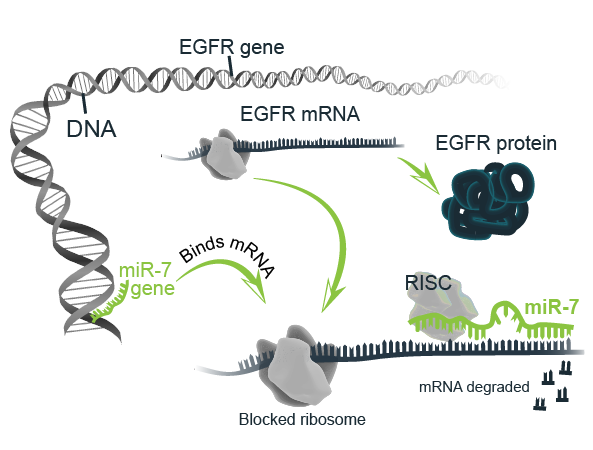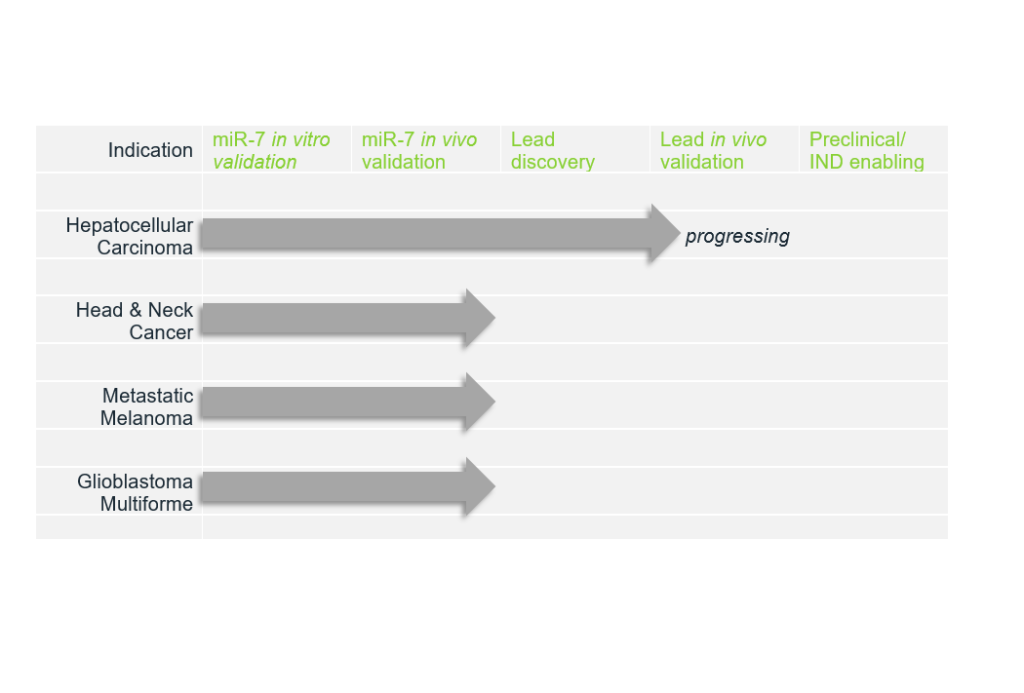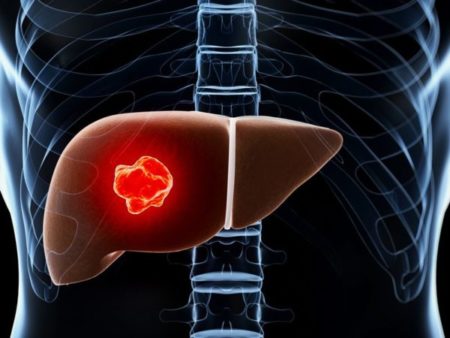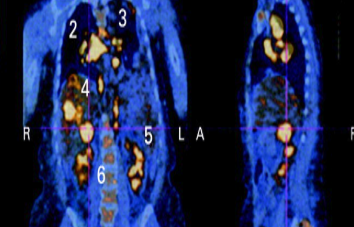Our Science

miR-7 targets EGFR mRNA and stops it being made into a functional protein inside cancer cells
About microRNAs and miR-7
MicroRNAs have emerged as an important class of small RNAs encoded in the genome. They act as master regulators to control the expression of sets of genes and entire cellular pathways. Recent studies have demonstrated that microRNAs are associated with many disease processes, including cancer. Because they are single molecular entities that dictate the expression of fundamental regulatory pathways, microRNAs represent excellent potential drug targets for controlling many biologic and disease processes.
microRNA-7 (miR-7) is a microRNA, a small double stranded RNA (dsRNA) that was found by Professor Leedman and his team at The Harry Perkins Institute of Medical Research to act as a tumor suppressor through inhibition of the epidermal growth factor receptor (EGFR) and its downstream signaling pathways that promote cancer development. The EGFR is a major target for cancer therapy because it is often associated with disease progression, resistance to chemotherapy/radiation therapy, and poor prognosis. miR-7 blocks production of the EGFR in two ways – one by reducing the amount of the EGFR messenger RNA (mRNA) produced and the other the amount of EGFR protein produced (see figure above).
Despite the development of several anti-EGFR agents for clinical use, virtually all patients develop resistance to the drugs, accompanied by a rapidly downhill clinical course. New agents, such as miR-7, hold great promise for treating cancers driven by the EGFR, especially as it can overcome EGFR targeted therapy resistance. This feature will be of great importance for the clinical application of mRx-7 in cancer patients. miR-7 has the important advantage over almost all other cancer drugs of simultaneously targeting the EGFR and many members of its critical downstream signalling pathways, a feature that contributes to miR-7’s powerful anti-cancer effect.
miR-7 and cancer
The potential for miR-7 replacement therapy has been investigated in a number of malignancies including:






